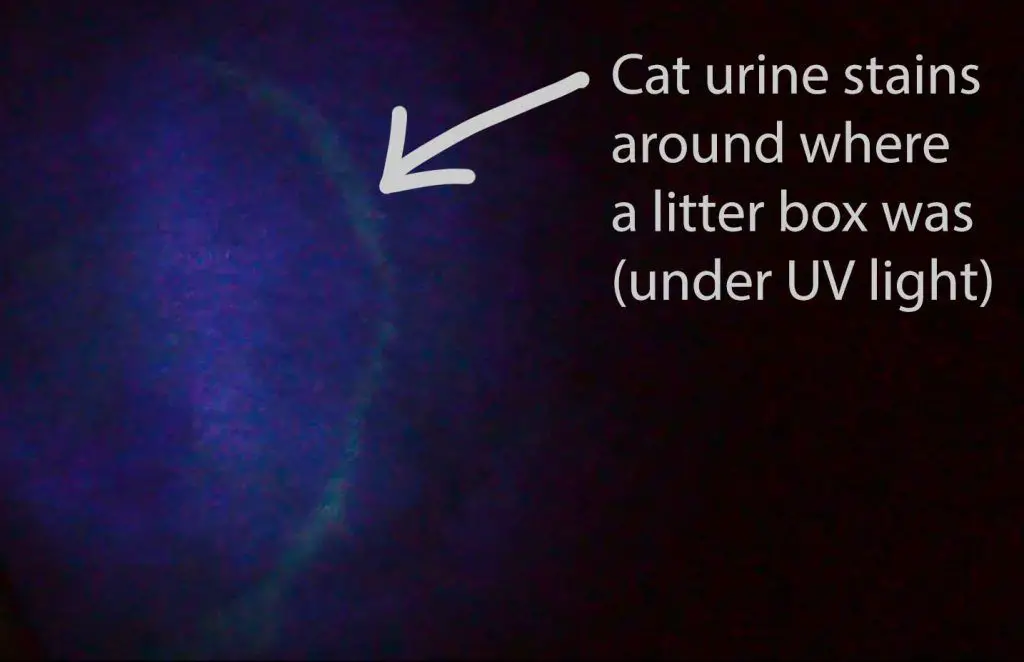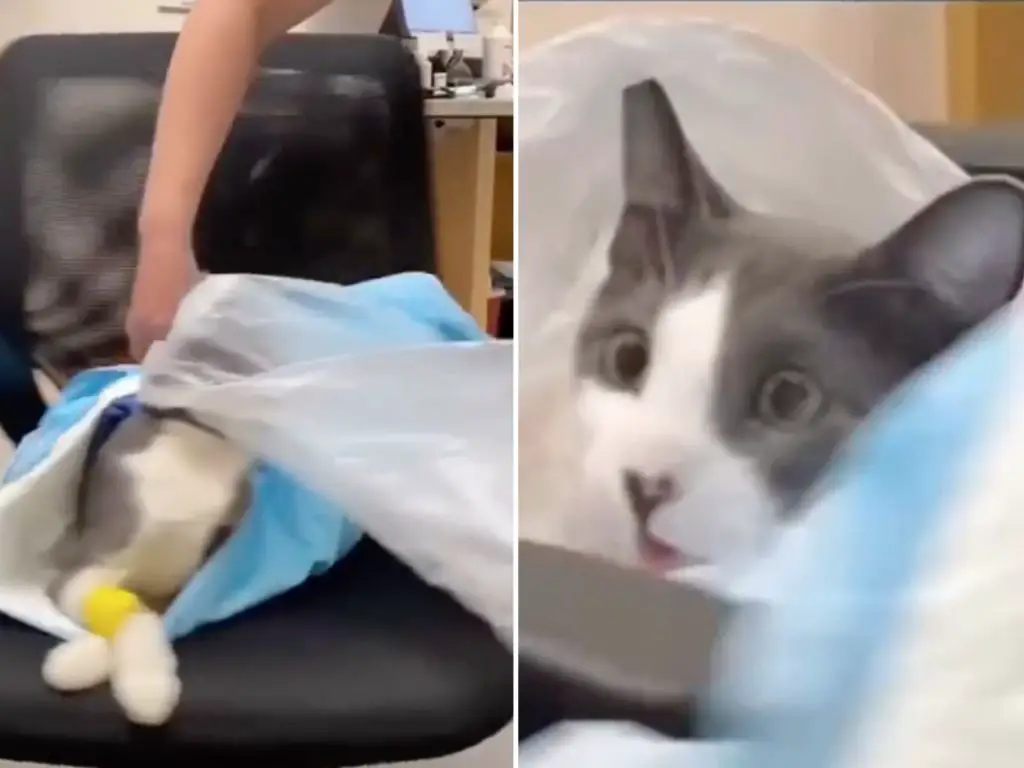What is a Blacklight?
A blacklight, also known as a UV light, is a lamp that emits ultraviolet radiation in the longwave UV-A range (315-400 nm), just outside the visible light spectrum. Unlike harmful shortwave UV rays, blacklights utilize the safer longwave UV rays. The phosphor coating inside the blacklight bulb absorbs the shortwave UV rays, converting them into visible violet or purple light. This allows the blacklight to emit the UV-A rays that make certain substances glow.
Blacklights have many uses, but are most commonly used to detect substances and materials that glow under UV illumination. This fluorescence occurs because the object absorbs the UV rays and re-emits visible light. Some common uses of blacklights include detecting counterfeit money, finding pet stains, analyzing forensic evidence, finding scorpions, observing stars, creating psychedelic effects, and detecting minerals or microorganisms. Blacklights can make white clothes appear bright, and are used in nightclubs and theaters. Overall, blacklights utilize ultraviolet light to reveal things that normally cannot be seen under regular visible light conditions.
Sources:
https://science.howstuffworks.com/innovation/everyday-innovations/black-light.htm
https://www.rainbowsymphony.com/blogs/blog/the-science-of-black-lights-how-black-lights-work
Why Certain Substances Glow Under Blacklight
Certain substances glow when exposed to ultraviolet (UV) light from a blacklight because they contain phosphors – chemical compounds that have luminescent properties. There are two types of luminescence that explain this glowing effect:

Fluorescence: This occurs when a phosphor absorbs UV photons and re-emits visible light photons almost instantly. The glow lasts only as long as the phosphor is exposed to the UV light. Common fluorescent substances include detergents, minerals, and some body fluids.
Phosphorescence: With this effect, phosphors continue to glow after the UV light source is removed. The phosphors absorb and store the UV photon energy, then slowly release it over time as visible light. Examples of phosphorescent materials include glow-in-the-dark toys, paints, and clock hands.
The specific chemical composition and properties of a substance determine how brightly it will glow under a blacklight, and what color the glow will be. Phosphor compounds containing europium, dyprosium, and lanthanides are commonly used to create vivid fluorescent effects.
Overall, fluorescence and phosphorescence explain why blacklights can make certain substances appear to magically glow in the dark. Understanding these photoluminescent processes helps demystify the blacklight effect.
Do Pet Bodily Fluids Glow Under Blacklight?
Certain pet bodily fluids will glow brightly under a blacklight. This includes urine, saliva, and vomit from cats, dogs, and other pets. The reason these fluids glow is because they contain fluorescent molecules that absorb and emit UV light wavelengths that blacklights produce.
Of these fluids, urine typically glows the brightest because it contains more of the organic compounds and metabolites that fluoresce under UV light. The main ones responsible for urine’s glow are riboflavin and chlorophyll metabolites. Cat urine in particular glows brightly due to the presence of felinine, a fluorescent molecule produced in cats’ livers.
Saliva and vomit also glow under blacklights, but the effect is usually less pronounced. Vomit contains partially digested food and bile, which can contain fluorescent molecules. However, the glow is diluted compared to pure urine. Saliva contains fewer metabolites and tends to glow faintly.
While all pet bodily fluids can glow under UV light, cat urine and vomit tend to glow more noticeably than that of dogs and other pets. This is because cats produce higher concentrations of riboflavin and felinine metabolites. So cat urine and vomit will usually fluoresce brighter under blacklights compared to other pets.
What’s in Cat Vomit That May Glow
Several components commonly found in cat vomit are known to fluoresce under blacklight due to their chemical makeup. Some elements to look for include:
Bile – Cat bile contains fluorescent substances like riboflavin and bilirubin which will glow vividly under UV light. The bile is greenish-yellow so will stand out clearly. See here and here.
Undigested food – Cat food often contains added vitamins that fluoresce green or blue under blacklight. Find more info here.
Hairballs – Hairballs from grooming can contain fluorescent substances that may have gotten on the cat’s fur or from stomach bile. See here for details.
Medications – Certain medications like antibiotics and vitamins prescribed for cats will often glow under blacklight. Check here.
When to Use a Blacklight for Cat Vomit
Using a blacklight to illuminate cat vomit can be helpful in several situations:
Locating all the mess for cleaning – Since cat vomit can contain phosphorescent elements like bile, a blacklight makes it easy to identify every last drop and stain, even on dark carpets or furniture. This ensures you can thoroughly clean the area.
Identifying blood or other abnormalities – Illuminated under a blacklight, the presence of blood in a cat’s vomit will glow a bright green and indicate a potential health issue. Other unusual colors may also signify something abnormal that requires veterinary attention.
According to veterinarians, a blacklight should be used if a cat has projectile vomiting, vomits more than twice in one day, or if the vomit contains blood [1]. These signs could point to an underlying condition, and the blacklight vomit analysis can provide helpful clues for the vet.
Pet owners may also opt to use a blacklight to identify all the areas soiled by a sick cat. Thorough blacklight inspection allows for complete clean-up of any lingering bacteria or viruses.
How to Use a Blacklight on Cat Vomit
Using a blacklight to detect cat vomit is most effective when done methodically in a darkened room. Here are some tips for best results:

First, darken the room as much as possible by turning off all lights and closing blinds. The darker the better, so the glow stands out. Put on protective glasses or goggles, as prolonged exposure to UV light can damage eyes. Then, systematically scan the surface in question with the blacklight held close to the surface. Move the light slowly and thoroughly over the entire area to ensure no spots are missed. Glowing areas will be clearly visible if cat vomit is present. Look for round shaped splatters or streaks.
Focus on areas like carpet, upholstery, walls, and baseboards where a cat may have vomited outside of plain sight. But remember that urine and other bodily fluids also glow, so the color and shape of the glow can provide clues as to the substance. Cat vomit often appears more yellow or greenish than the bright blue glow of fresh urine. The texture and consistency of any remaining substance may also indicate vomit.
For best visibility, use a powerful blacklight of at least 3,600 μW at close range in a dark room. High-powered LED blacklights perform the best. Move methodically and use proper eye protection for safely revealing any dried cat vomit.
Source: https://www.floppycats.com/best-black-light-finding-cat-urine.html
Other Uses for a Cat Vomit Blacklight
A blacklight can be useful for more than just detecting cat vomit. Here are some other common uses for a blacklight around the house:
Finding urine stains – Cat and dog urine will glow brightly under a blacklight. This allows you to find all the urine stains around your home, even old or faint stains that are invisible under normal lighting. Thoroughly cleaning these stains with an enzyme cleaner will prevent your pets from remarking the areas. Source
Detecting hidden dirt and dander – A blacklight can reveal unsanitary buildup of dirt, dander, and germs around your home. Use the blacklight to identify areas that need deeper cleaning. This is especially helpful for people with allergies or asthma.
Finding medication spills – Many medications will fluoresce under blacklight. If you spill pills or liquid medication, the blacklight can help you locate and thoroughly clean up every last bit. Prevent accidental ingestion or skin contact by using the blacklight to verify the area is completely clean after a medication spill.
Precautions for Blacklight Use
Blacklights, also known as UV lights, can be useful for finding stains, but they also pose some safety hazards that pet owners should be aware of. UV exposure can damage the eyes and skin, so it’s important to take precautions when using a blacklight.

The most critical precaution is to avoid shining the blacklight directly into your or your pet’s eyes, as this can cause short-term and long-term damage. Wearing UV-blocking eyewear is highly recommended for both you and your pet when using a blacklight. UV light exposure guidelines state that ordinary eyeglasses do not provide sufficient protection.
It’s also wise to avoid prolonged skin exposure to the UV light, as it can cause burns. Keep the blacklight at a distance and limit its use to short intervals. You may want to check with your vet about whether your specific cat breed is photosensitive or prone to skin issues from light. For safety, minimize direct contact between the blacklight and your pet’s skin and eyes.
With some simple precautions, a blacklight can be used safely to detect glowing substances. But be sure to keep UV light exposure brief and avoid direct eye contact. If you follow safe usage guidelines, a blacklight can be an effective cleaning tool for cat parents.
Best Blacklights for Pet Messes
When choosing a blacklight to detect pet messes, there are a few key considerations:
Portable LED vs Fluorescent Tubes
LED blacklights are now commonly available and offer some advantages over traditional fluorescent blacklights. LEDs are powered by batteries so they are completely portable and cordless. They are also more durable and longer-lasting than fluorescent tubes. However, fluorescent blacklights cast a wider beam of light which can make inspecting larger areas faster [1].
Features Like Glare Reduction
Look for a blacklight with features that make it easier to use, like adjustable beam focus, glare reduction, and ergonomic grips. An adjustable focus allows switching between a pinpoint light for small stains and a wide flood beam for scanning bigger areas quickly. Glare reduction helps prevent light reflecting back and making it hard to see stains. A comfortable, slip-proof grip also aids in keeping the light steady while in use [2].
When to Call the Vet About Glowing Vomit
If your cat’s vomit glows under a blacklight, it does not necessarily mean there is an emergency. However, certain signs accompanied by glowing vomit do warrant a call to the veterinarian:

Signs of blood or illness: If you notice blood, a coffee ground appearance, or your cat seems ill when the vomit glows, contact your vet right away as this could indicate a serious medical issue (VCA Animal Hospitals).
Persistent vomiting: Repeated vomiting, especially if more frequent than once a month, needs to be evaluated by a veterinarian to determine the cause and treat any underlying conditions (My cat keeps vomiting! Should I head to the emergency vet?).
Weight loss, lethargy, etc.: Other concerning symptoms like weight loss, lethargy, loss of appetite, drooling, diarrhea, or hiding paired with glowing vomit are reasons to promptly contact your vet (When To Be Concerned About Feline Vomiting).

